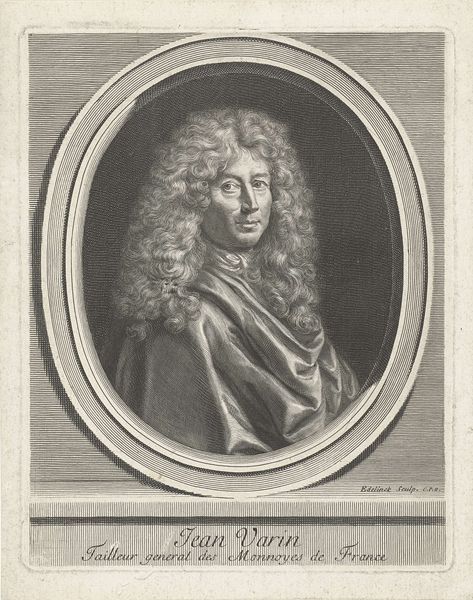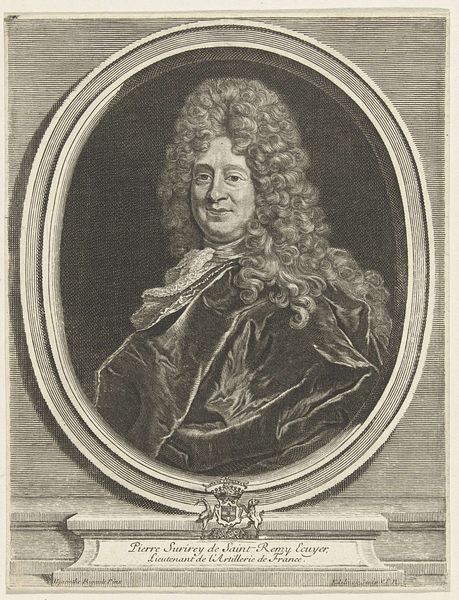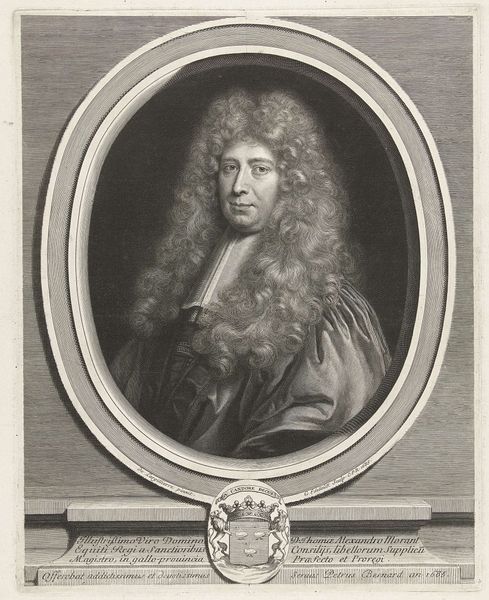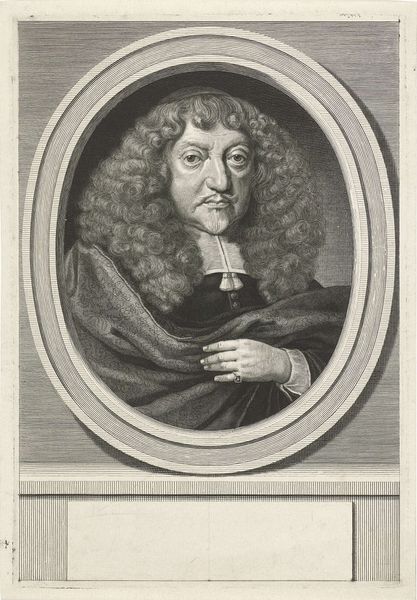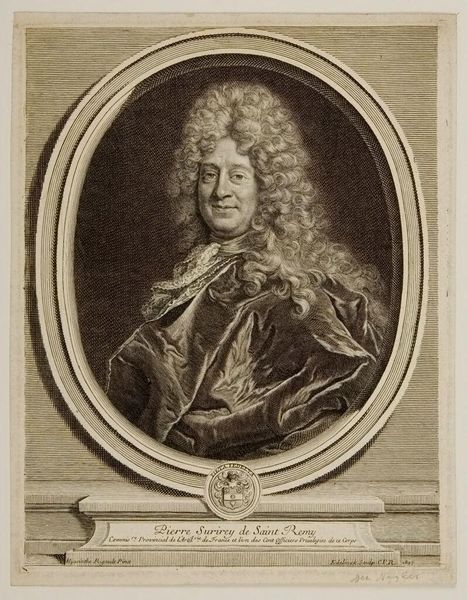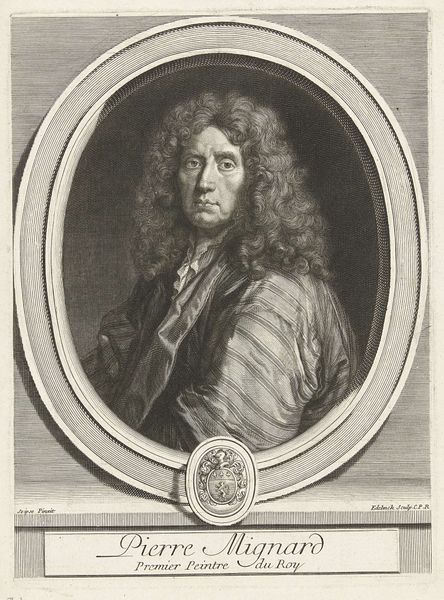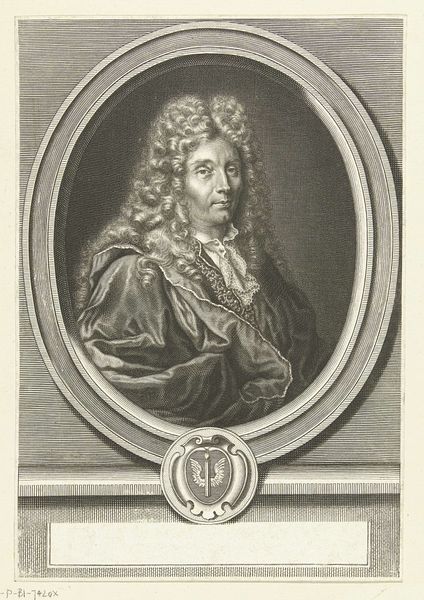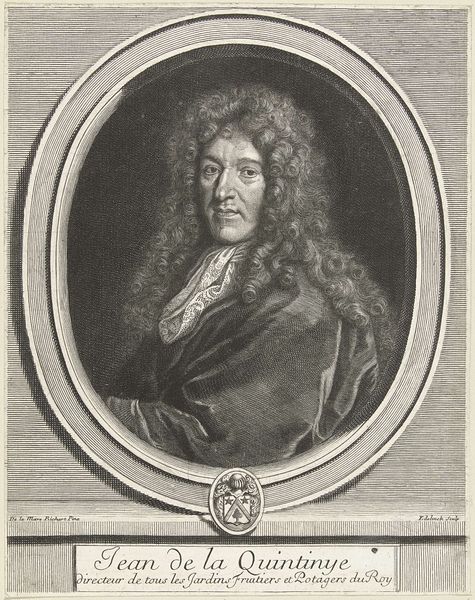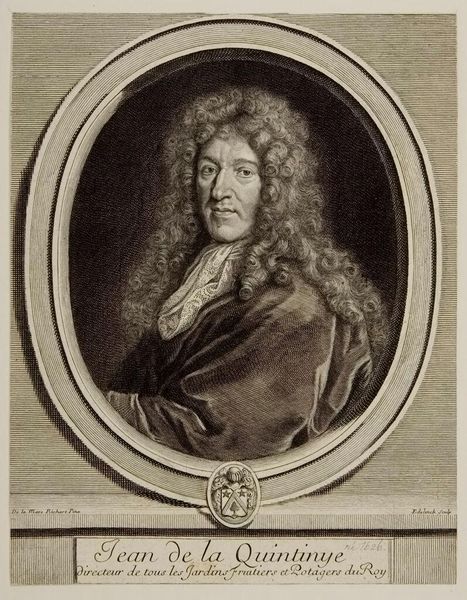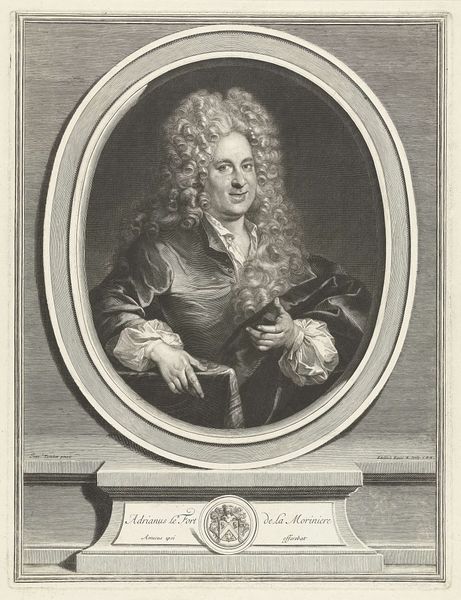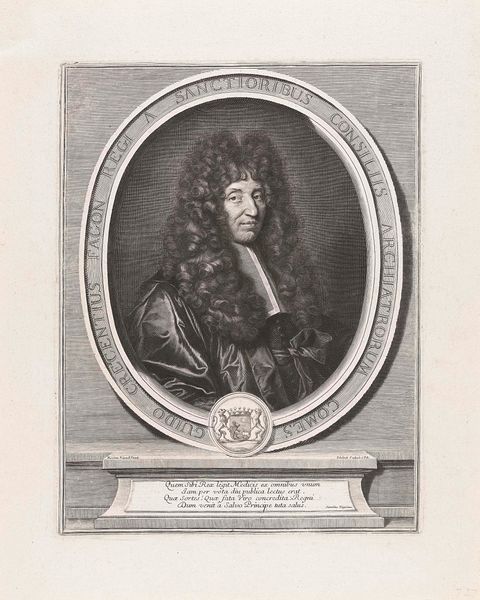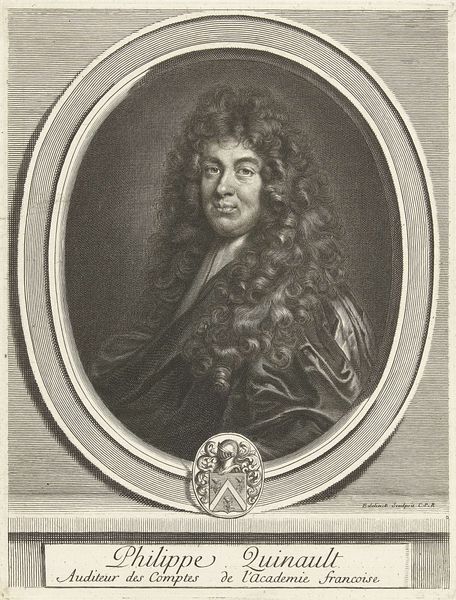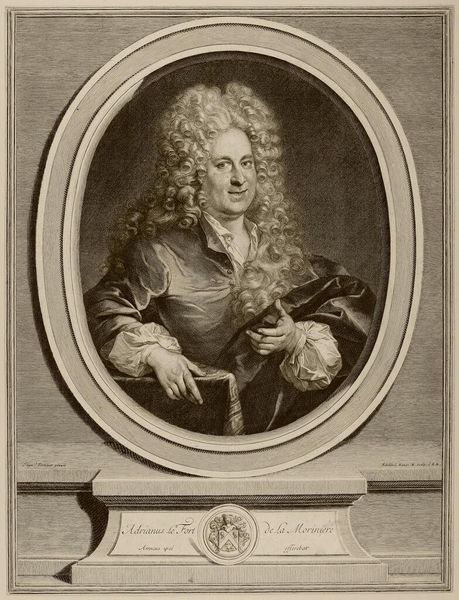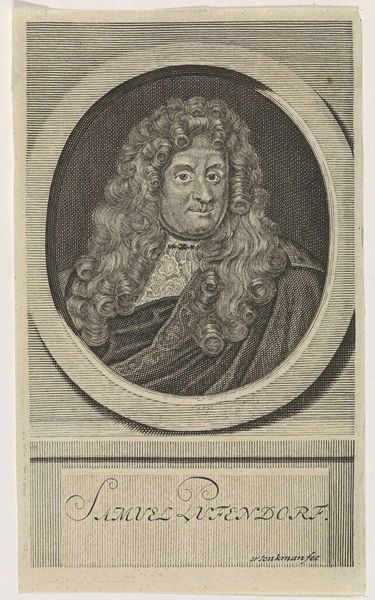
engraving
#
portrait
#
baroque
#
old engraving style
#
portrait drawing
#
history-painting
#
academic-art
#
engraving
Dimensions: height 248 mm, width 183 mm
Copyright: Rijks Museum: Open Domain
Curator: This is Gérard Edelinck’s engraving, “Portret van Isaac de Benserade,” likely completed between 1666 and 1707. You can find it here at the Rijksmuseum. Editor: The immediate impression is one of calculated flamboyance. The subject, framed in an oval, presents with elaborate hair and a gaze that feels both self-aware and slightly…defensive? Curator: Edelinck was a master engraver who captured the likenesses of many prominent figures of his time. Consider how the printing press shaped public image. The engraving style allowed for broad dissemination and accessibility, influencing perceptions of power and intellect. Editor: Absolutely, but I see more than just a neutral conveyance of status. The choice of rendering Benserade, a playwright, this way is interesting. The swirling, almost chaotic hair clashes intriguingly with the rigid, classical oval frame, suggesting an internal tension between creativity and societal expectation. The contrast speaks volumes about the era's approach to artistic genius—both celebrated and contained. Curator: The meticulous detailing certainly speaks to Edelinck's skill and the demands of the academic art world. Note, too, the inscription designating Benserade as a member of the Académie Française. This signals his position within the French cultural establishment. This tells us how cultural institutions and networks shape artistic expression and define artistic merit. Editor: The heraldic shield below, though small, whispers of lineage and privilege, complicating our reading further. How does this intersect with accessibility through print? While seemingly available to the masses, who truly had the means to engage with these images and their encoded meanings? Curator: The Baroque style is undeniable; notice how Edelinck uses light and shadow to add depth, yet he adheres to a certain formality fitting the expectations of the court and academy. This exemplifies the artistic restraints and the visual language approved and perpetuated by these institutions. Editor: True. Considering it through a contemporary lens, this portrait serves as a potent reminder that images, even seemingly straightforward depictions, are never neutral. They are constructed, shaped by power dynamics and embedded with cultural significance that continues to resonate today, prompting us to dissect the narrative it presents and its accessibility to varied audiences. Curator: Precisely. The act of bringing these figures, quite literally, to the printing press shaped perceptions, contributing to the narratives they embodied. Editor: A beautiful image, made so much richer by understanding its context and considering the dynamics embedded within.
Comments
No comments
Be the first to comment and join the conversation on the ultimate creative platform.
